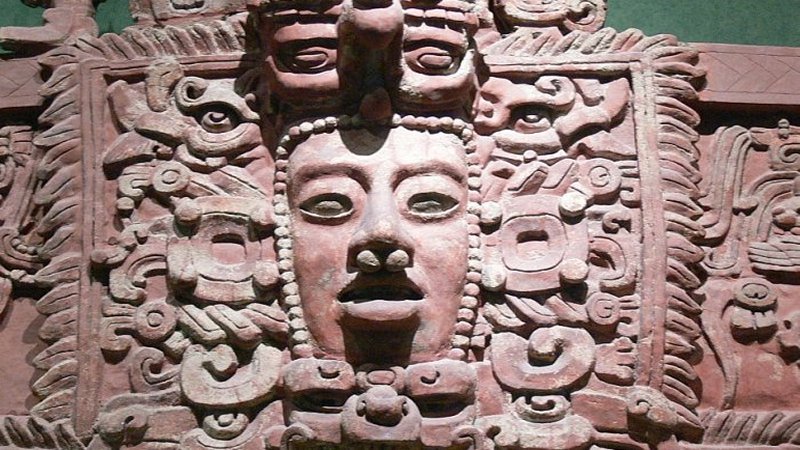Conny Waters – AncientPages.com – An international team of scientists has now pinpointed the precise date and nature of the Ilopango volcanic eruption that took place 1590 years ago.
In 431 CE, 1590 years ago, the Maya civilization was laid waste as the eruption killed every living thing within 40 km around the volcano.

Maya mask. Stucco frieze from Placeres, Campeche. National Museum of Anthropology in Mexico City. source
This major volcanic eruption in the region was established in previous studies, but the date of the event was long unknown.
In the study, the team analyzed an ice core recovered from Greenland and also carried out radiocarbon measurements from a charred tree found in the TBJ ash deposits. Hence, they were able to date accurately the massive eruption to within just a couple of years, in 431 CE.
“A great part of this research has been possible thanks to all the data acquired during three field campaigns carried out in El Salvador during which we conducted a detailed mapping of the ash deposits present in an area of 200,000 km2 [77,220 square miles],” Dario Pedrazzi, a researcher at Geosciences Barcelona–CSIC (GEO3BCN) and a co-author of the study, said in a press release.
“More than 2 million km2 of Central America was covered with at least a half centimeter of ash, and it would have been dark over this region for at least a week,” said Victoria Smith, associate professor from the University of Oxford who led the study. Smith added that around 55 km3 of magma erupted from Ilopango and the eruption plume rose to 45 km while the Ilopango’s ash was dispersed more than 7,000 km, as far away as Greenland.
“The Ilopango Eruption was more than 50 times bigger than that of Mount Saint Helens,” which occurred in 1980. “The pyroclastic flows from the eruption of Ilopango were 10 times the volume of those from Vesuvius, which erupted in 79 CE, preserving the Roman city of Pompeii in ash.”
The explosion took place during the Maya Early Classic Period, which extended from 300 to 600 CE, as the civilization saw growth across Central America.
“The explosion would have killed every living thing within 40 km and there would have been no inhabitants for many years or decades in the vicinity.” The enormous eruption did not, however, have a marked impact on the Maya elsewhere.
Ilopango was thought to have been responsible for the anomalously cold decade in the Northern Hemisphere around 540 CE. But the work shows this date is at odds with archeological evidence (pottery production), which actually suggests a date near the start of the Early Classic period.
The Ilopango Caldera is located less than 10 km from San Salvador City, the capital of El Salvador, and it’s a part of the Volcanic Arc of El Salvador, which includes a total of 21 active volcanoes, being one of the most active segments of the Central America Volcanic Arc.
Written by Conny Waters – MessageToEagle.com – AncientPages.com Staff Writer







